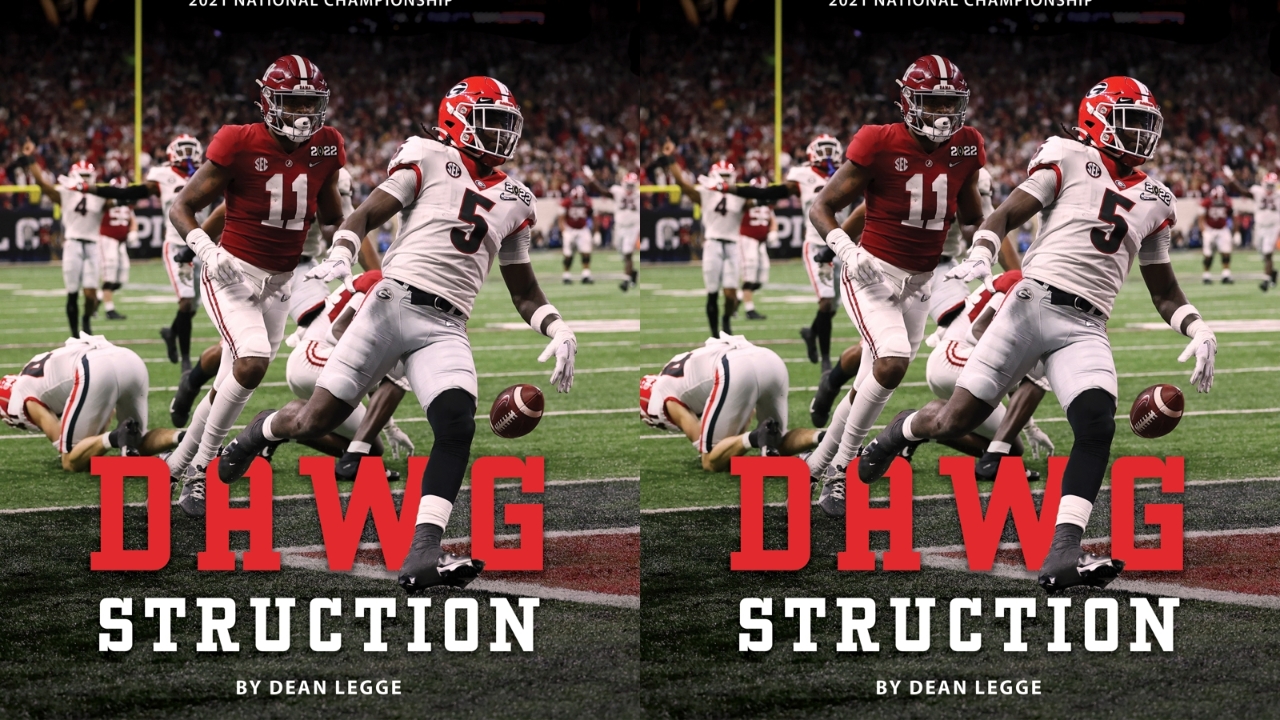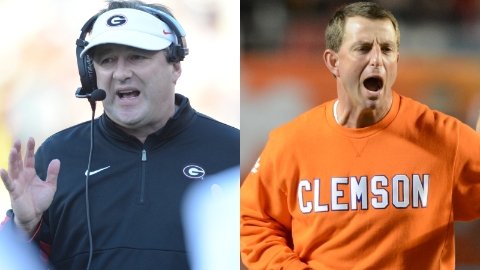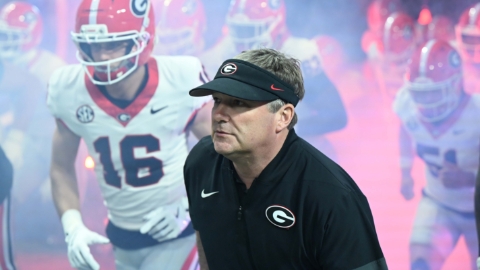POWER STRUGGLE: Inside the Big Ten and SEC's Fight for the Future of College Football
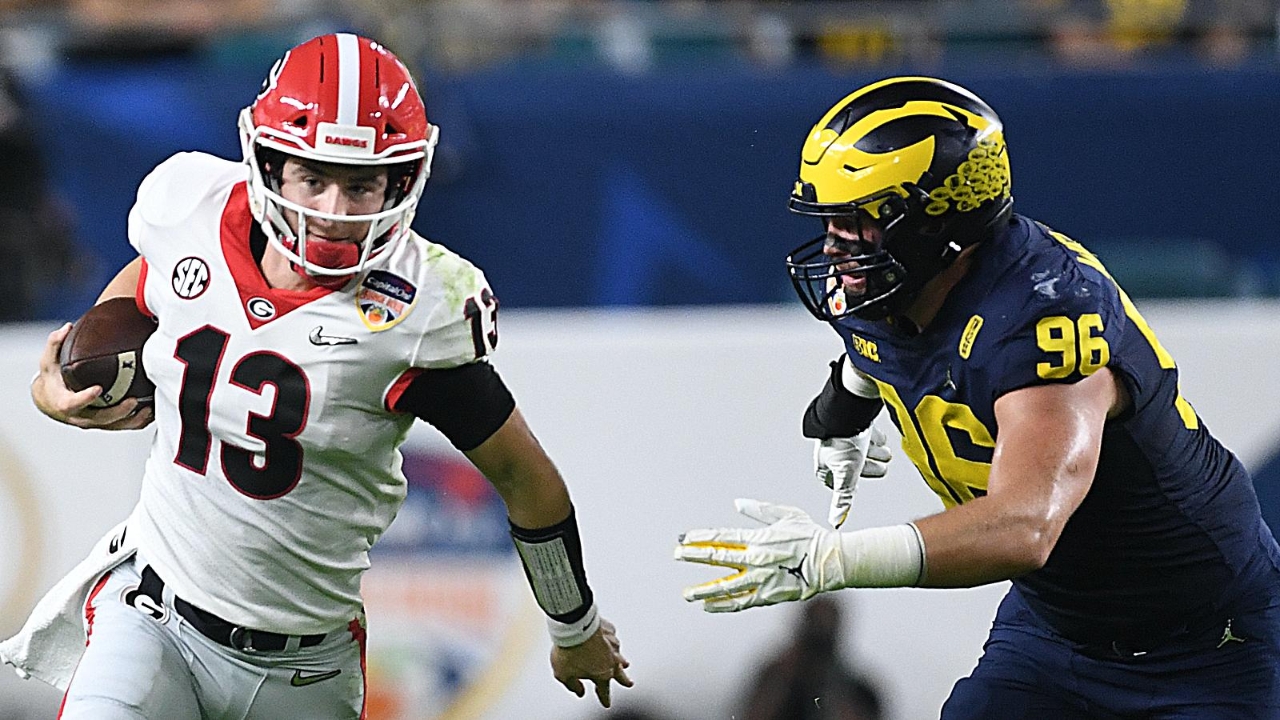
DON’T MISS OUT: Get our insider newsletter today!
ATHENS - Larry Munson, the legendary voice of the Georgia Bulldogs, used to start all of his broadcasts by saying: “Get the picture.”
He wasn’t telling his listening audience to turn on a TV. But over the last few decades TV replaced the crackling voice of Munson and his peers in radio as the go-to medium to consume college football. The cameras are in control now - the last 18 months has proven that.
TV is now king of college football.
Last year the SEC and Big Ten combined to overwhelm the competition in terms of viewership of their No. 1 media packages. The Big Ten on FOX drew in 97,174,000 viewers last fall. The SEC on CBS had 91,249,000. No other conference drew more than 70 million viewers on broadcast television in all of their games combined (B12 - 70M; P12 - 42M; ACC - 37M)
Anyone with a device gets the picture now thanks to the virtual blanketing of the sport on TVs, computers and cell phones. Gone are the days when Munson’s gravelly descriptions of the Dawgs gave goosebumps to Georgia fans. Today’s fan watches the game live on some device; sees the replay on the SEC Network; and catches highlights on YouTube, TikTok and elsewhere.
In grabbing all of the rights to the SEC, Disney now has the broadcasting rights to six of the most-watched ten programs in the country when it comes to conference-controlled games. Alabama, Georgia, LSU, Auburn, Oklahoma and the Gators make have been watched by more than 3.3 billion viewers over the last ten years. Those programs, alone, make up 22% of the total viewership of college football over the last ten years.
College football has become a show, which means each team is a drama - with villains and heroes, and a result in a given period of time each weekend. The worst-case scenario is a team becoming a comedy.
The future of college sports will be shaped by money from football games being broadcast. By 2025 college football TV deals will be worth at least $3.2 billion a year combined. Needless to say, some programs are making more than others, and that’s causing very real stress. In 2025, Vanderbilt will make more in TV rights each year than Clemson and Florida State... combined.
TV has changed college athletics in ways that would have been very hard to understand when Georgia, Penn State and Oklahoma sued the NCAA in 1984 for the ability to broadcast more games. That ruling changed college sports for good, but has taken decades for the ramifications from the ruling to take over.
Celebrate Georgia's 2021 NATIONAL TITLE
Check out DAWGSTRUCTION NOW!
TV hasn’t just brought millions of fans their favorite teams to their living room - it has brought significant change to a sport that was once regional, and made it national. Georgia’s Southeastern Conference once included only ten teams. Soon it will have 16 - with its borders stretching from sands of Myrtle Beach to the mountains of El Paso; from South Beach past the Gateway Arch near I-70 all the way to Kansas City.
And TV appears to be driving a split between the two powers in the sport - the SEC and Big Ten - and their respective media partners. Those partners include at least Disney (ABC and ESPN) and News Corporation (FOX) - although that list could grow as it did in August when NBC and CBS agreed to broadcast part of the Big Ten’s $1.1 billion yearly TV package. Streaming services have not gotten into the ballgame yet, but they have been sniffing around.
Even with the seismic change in the sport over the last 12 months questions loom. What is the future of College Football Playoff? Can the fracturing of the Big 12 and Pac 12 be repaired? The ACC’s unhappy marriage is bubbling under the surface. And, of course, the age-old question: will Notre Dame will ever fall in line with the rest of the sport and join a conference?
In addition, will the SEC or Big Ten expand in the future? In talking with a slew of insiders around the SEC and ACC it appears expansion isn’t immanent in the SEC for several legal and business reasons. Still, the leverage of the SEC and Big Ten over the other three power leagues is obvious - both have money... and lots of it.
That’s why those two leagues have been in position to make power moves over the last 12 months. The SEC’s acquisition of Texas and Oklahoma was followed a year later with USC and UCLA’s departure to the Big Ten. Leading up to the summer of 2021, members of the SEC were concerned the Sooners and Horns could move to the ACC.
“Folks viewed Oklahoma and Texas to the ACC or somewhere else as legitimate threat (to the SEC),” one SEC power broker said.
That was not an acceptable outcome for the SEC or its member institutions, so the league acted.
The next shoe to drop (if there is one) is a much more complex situation. All four programs on the move have not moved yet. The so-called Grant of Rights that Texas and Oklahoma signed with the Big 12 expires as they leave the conference - the same can be said for USC and UCLA. They have declared publicly that they will exit their current leagues at the end of their contractual obligations with their leagues’ broadcast partners. Insiders believe that to be true - not just a smokescreen. Besides, the cost for leaving early isn’t worth the trouble it seems… and it would be very, very costly.
Meanwhile, the rest of college sports is sweating the future. The ACC has handcuffed themselves together as a group until 2036. The Big 12 and Pac 12 are scrambling with what’s left to secure their future - both conferences have broadcasting rights deals looming in the coming months.
Out-of-conference programs looking to jump into the SEC would have to fit a particular profile. More acutely, insiders point out that adding schools from states that are already in the footprint of the league won't grow SEC Network subscriptions in those states. Simply put: there is no point in adding Louisville, for instance, to the SEC because cable subscribers in Kentucky are already paying for the SEC Network. Louisville doesn't add to the bottom line.
“It is already saturated,” one insider explained.
Only new territories - outside of the SEC’s current sizable footprint - would be likley to generate more cable revenue. So while Clemson, Miami and Florida State may fit many of the stereotypes of an SEC school they don’t fit into the current situation that matters to the league, which is adding value and therefore money. As we will see later - the SEC Network is a major asset for the league, and its members.
In addition, those three schools would have to escape the ACC’s Grant of Rights, which is far easier said than done - and would be so pricey that it is questionable if it is worth it.
This comment from SEC commissioner Greg Sankey in July about other programs dealing with grant of rights also seemed to throw cold water on the notion of any ACC members joining the SEC: “We’re not going to get in the middle of those (grant of rights) issues. They've got to figure out their futures.”
Translation: Have fun in the ACC fellas - we will see you in 2036.
Litigation isn’t something anyone in college sports seems eager to participate in. Being in the middle of a grant-of-rights fight is a perilous risk that does not seem like it is worth the reward.
Still, two actions loom over the the future of college football more than anything else.
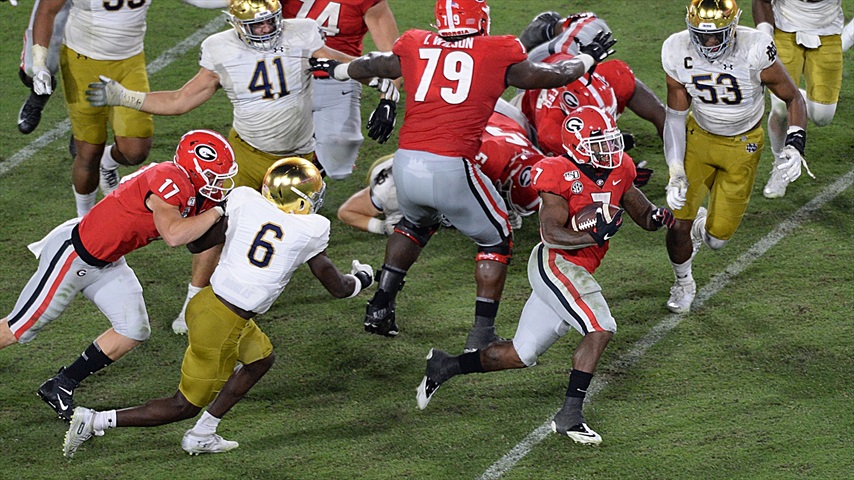
First, Notre Dame is key to the future - no matter how annoying that sounds to everyone not named Notre Dame. That school’s contract with NBC for football that concludes in 2025, but the Irish are also members of the ACC in virtually every other sport. There is also contractual language that states that if Notre Dame joins a conference in the future that it must be the ACC.
If Notre Dame wanted to leave the ACC it would have to get out of its Grant of Rights designation in non-football sports, which would still be costly, complicated and not certain. An extension of the Irish’s contract with NBC would signal Notre Dame is unlikely to join a conference. Most insiders think Notre Dame will stay independent. If the Irish continue to have access to the playoff most insiders think Notre Dame will not join a league in the future, and therefore the sport will have reached another holding pattern.
Most insiders think that if Norte Dame doesn’t move no one will.
Second, and perhaps most important is the future of the College Football Playoff. Disney’s 12-year contract with the CFP ends after the 2025-26 season. The reported 8-3 vote against playoff expansion to 12 teams in 2021 likely holds the CFP to four teams in the near future. But this is a moving target to be sure.
After Big Ten commissioner Kevin Warren’s comments in late July it is clear his league voted no on an expanded playoff because their primary media partner, FOX, wants in on the bidding for the College Football Playoff when the current contract runs out.
As we will see later in this report - Disney and FOX (parent company News Corporation) - are in the midst of a sort of college football TV cold war. The two sides have drawn pretty distinct lines in the sand, but there are a few other smaller players left on the landscape that are helping reshape the future.
2025 and 2026 will be critical years in college sports, and will set the landscape for most of the future of the industry for the rest of this century.
Celebrate Georgia's 2021 NATIONAL TITLE
Check out DAWGSTRUCTION NOW!
WHAT DOES THE FUTURE HOLD FOR THE SEC?
If you like big night games, you are going to love what’s in store when ABC takes over the SEC. In 2024, the SEC will take advantage of being able to play multiple games on ABC each Saturday. On background, SEC insiders say weekends like this year’s November 5th could look something like this:
ABC at Noon - Florida at Texas A&M
ESPN at Noon - Missouri at Kentucky
ABC at 3:30 - Tennessee at Georgia
ABC at 8:00 - Alabama at LSU
ESPN at 8:00 - Auburn at Mississippi State
Florida, Georgia, Alabama and LSU - four of the biggest draws in the sport - playing to a nationwide audiance on ABC back to back to back. It is a consumer’s dream, and something the SEC has been waiting some time to pull off.
But that’s just one example of the change that could come in the future. Rivalries like Georgia-Georgia Tech could be moved to Thanksgiving Day or Black Friday (or even to the start of the year if the SEC encourages it). We’ve already seen Disney move FSU-Florida to a night game on Black Friday. Having Tech-Georgia lead up to that game at 3:30 every single year would allow for consistency as well as the Dawgs having an extra day to get ready for an SEC Championship showdown.
Rivalry weekend on ABC in the SEC (and ACC) could look something like this:
Friday:
Noon: Missouri at Arkansas
4 PM: Georgia Tech at Georgia
8 PM: Florida at Florida State
Saturday
Noon: Texas A&M at Texas
4 PM: Oklahoma at LSU
8 PM: Alabama at Auburn
Right now moves like that can’t take place because ABC doesn’t control the rights to that game in even years. That will change now as it will for South Carolina-Clemson (which was played on Thursdays for decades). Now that Disney owns the rights to these rivalries it will do its best to spread them out over Thanksgiving weekend to get the most bang for its buck.
Alabama and Auburn should prepare themselves to play on Saturday night for the Iron Bowl each year. Big games like LSU-Georgia, Florida-Auburn and Tennessee-Georgia will all almost certainly be at night. Georgia and Florida might be asked to do the same with this annual rivalry, but SEC insiders say on background that if league members advocate for leaving games in the afternoon that will be given consideration by the league and Disney.
Still, putting brand-name rivalries like Georgia-Florida, Auburn-Alabama, LSU-Alabama and Georgia-Auburn on in primetime will become the norm. After all, viewing in primetime is when most consumers watch.

MOST-WATCHED COLLEGE FOOTBALL PROGRAMS 2012-2021 (TOTAL VIEWERS)
| 1. Alabama | 1,027,064,000 | SEC |
| 2. Ohio State | 790,299,000 | Big Ten |
| 3. Clemson | 579,106,462 | ACC |
| 4. Georgia | 571,816,559 | SEC |
| 5. Notre Dame | 561,791,000 | IND/ACC |
| 6. Michigan | 520,873,532 | Big Ten |
| 7. Oklahoma | 488,452,372 | Big 12 |
| 8. LSU | 473,400,462 | SEC |
| 9. Auburn | 432,296,000 | SEC |
| 10. Florida State | 396,445,110 | ACC |
| 11. Florida | 379,689,796 | SEC |
| 12. Michigan State | 365,973,720 | Big Ten |
| 13. Wisconsin | 362,327,715 | Big Ten |
| 14. Penn State | 347,617,000 | Big Ten |
| 15. Oregon | 344,256,396 | Pac 12 |
| 16. Texas A&M | 319,785,372 | SEC |
| 17. Texas | 316,655,916 | Big 12 |
| 18. USC | 291,251,988 | Pac 12 |
| 19. Oklahoma State | 260,682,996 | Big 12 |
| 20. Nebraska | 260,098,559 | Big Ten |
There are a few things to consider when looking at the landscape of the future of the SEC as it relates to its peers. First, the overall power of the SEC is hard to refute. But it is power of the SEC package itself that helps catapult the league in to its current position.
Auburn and Clemson are very good examples of what’s going on in today’s marketplace. Which team is a more valuable TV property?
Over the last ten seasons, Clemson is the No. 4 most-watched team in college football in terms of every single game played. But that number is skewed because of playing in the College Football Playoff, which is not controlled by conference media rights holders. The CFP is controlled by only Disney. But it has nothing to do with the ACC’s agreement with Disney.
The movement in college football today has everything to do with the value of programs in the regular season, conference-controlled games. That’s might seem nuanced, but it is reality - that is where the big money is coming from. One could make the case that Auburn is more valuable than Clemson, and not exclusively because of Auburn’s rivalries with Alabama and Georgia (but those two games are huge draws that happen every year).
While Clemson has been the 4th-most watched college team over the last ten years - Clemson (298,136,000) has attracted 40 million fewer viewers than Auburn (338,803,000) over the last ten years when it comes to conference-controlled games.
In other words - even with all of the success and winning Clemson has enjoyed over the last ten years fewer people watch them in the regular season than watch the up-and-down drama that has been Auburn. Is that the SEC? Is that Auburn’s ability to shoot itself in the foot in the most fascinating way? Is that the Iron Bowl?
It is certainly the Iron Bowl - that game trials only Ohio State-Michigan (107,066,000) in terms of overall viewership of yearly games played over the last ten years (99,999,000). Auburn’s draw is also the Deep South’s Oldest Rivalry with Georgia (60,008,000). That game is the 10th most-watched game in college football over the last ten years.
Clemson doesn’t have those types of games in the ACC. As close as Clemson can get to that is its annual contest with FSU (40.2M over the last ten years), which is not as popular as Georgia-Tennessee (47.4M) or Nebraska-Iowa (43.1M).
And the Tigers’ run from 2015 to 2020 has been the golden era of Clemson football. It might be the golden era of ACC football when you consider that no ACC team has ever won two national titles in football in three seasons - not even Bobby Bowden’s Seminoles.
We have seen the best version of Clemson ever over the last ten years. Is standard Auburn more valuable than peak Clemson? The numbers say yes. Over the last ten years Clemson has played only one game regular season with more than 10 million viewers - the loss at Notre Dame in 2020. Auburn has played seven, with five coming against Alabama.
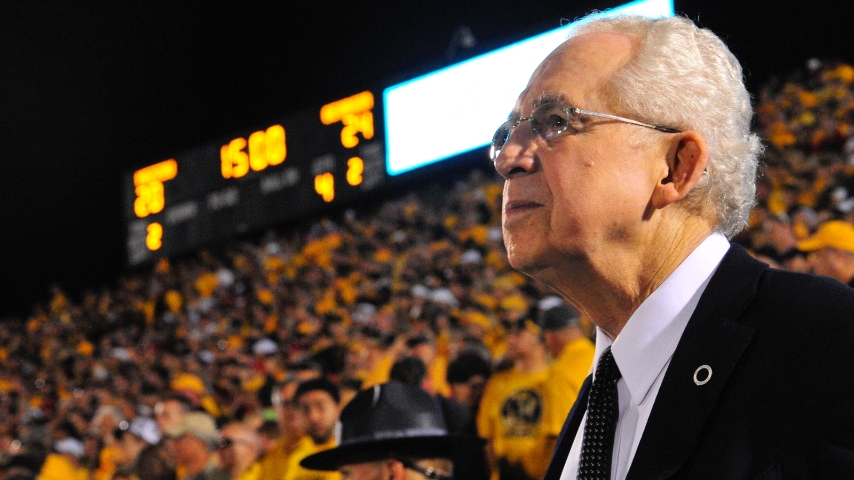
Would Clemson-Alabama each year have the same sort of viewership? Is Clemson been penalized for its league?
That question, in particular, seems to trigger Clemson fans, so perhaps there is another way to put it. Would Auburn be as big a draw in the ACC as it is in the SEC?
The bigger, more critical question is what value schools like Clemson would bring to the SEC or Big Ten in the future. Would that value offset the cost of bringing the Tigers, Miami or Florida State into the SEC?
MOST-WATCHED COLLEGE FOOTBALL GAMES 2012-2021
| 34,600,000 | Ohio State - Oregon | 01/12/2015 | ESPN | 8:30 PM |
| 28,443,000 | Alabama - Georgia | 01/08/2018 | ESPN | 8:00 PM |
| 26,913,000 | Oklahoma - Georgia | 01/01/2018 | ESPN | 5:00 PM |
| 26,700,000 | Alabama - Clemson | 01/11/2016 | ESPN | 8:30 PM |
| 26,380,000 | Alabama - Notre Dame | 01/07/2013 | ESPN | 8:45 PM |
| 26,060,000 | FSU - Auburn | 01/06/2014 | ESPN | 8:30 PM |
| 26,000,000 | Alabama - Clemson | 01/09/2017 | ESPN | 8:19 PM |
| 25,590,000 | LSU - Clemson | 01/13/2020 | ESPN | 8:00 PM |
| 25,280,000 | Alabama - Clemson | 01/07/2019 | ESPN | 8:00 PM |
| 24,214,000 | LSU - Alabama | 01/09/2012 | ESPN | 8:30 PM |
The SEC Network is a major thing to consider here. Former SEC Commissioner Mike Slive’s move to create the SEC Network was critical for the league. One insider with direct knowledge of the financials of the SECN describes it as “very successful vs. its competitors.”
The SEC Network is one of the league’s top assets, and it is a major factor in any expansion considerations.
Miami, Clemson and Florida State are all within the footprint of the SEC already. That means a cable subscriber in Summerville, SC already has the SEC Network, and pays for it. Adding Clemson to the SEC doesn’t change the math on the SEC Network. The same goes for FSU and Miami.
On the other hand, let’s say there are 4 million cable subscribers in North Carolina. According to reporting in the Sports Business Journal, SEC Network subscribers in the league’s 11-state footprint paid $1.30 in 2014 to get the channel - outside the 11 states the cost was a quarter. That’s higher than the Big Ten Network collects ($1.00 in market), and the SEC keeps a higher percentage (50%) of network revenue vs. what the Big Ten keeps in its relationship with FOX (39%).
So the math as it relates to the SECN for adding the Tar Heels is as follows:
$1.30 (in-market cost)— $0.25 (out-of-market cost) = $1.05 (Difference)
$1.05 x 4,000,000 (NC cable subscribers) = $4,200,000 / month
12 x $4,200,000 = $50,400,000
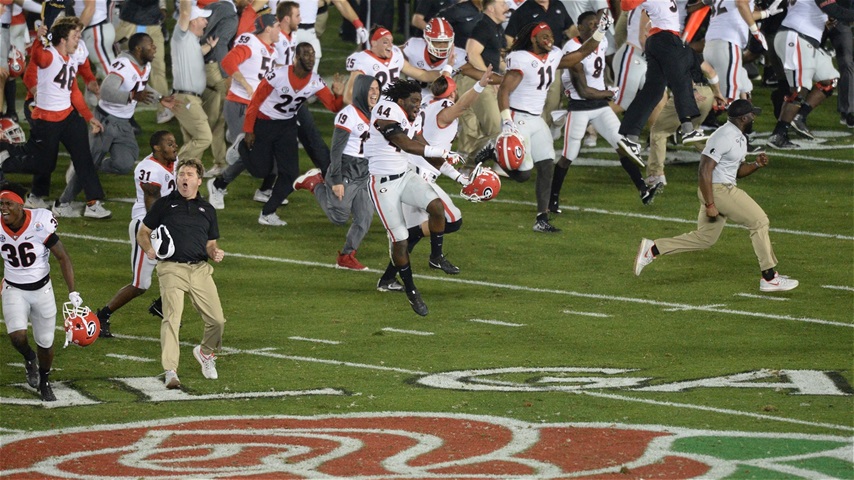
Adding Virginia would double that to “about” $100 million a year, which the league would split with Disney. All told a move like that would trickle down another $3 million or so dollars a year to Georgia and the other (at that point) 17 schools - and these numbers are conservative. Revenue could be double or triple that number depending on the number of cable subscribers, and the carriage fee the SECN gets in the future.
AL.com's John Taltey reported in 2015 that Navigate Research vice president Jeff Nelson feels like a move past the $1.30 per month range to $2.00 or $3.00 for a subscrption to the SECN isn’t “outlandish”, so the numbers could double or triple.
What would adding UVA and UNC earn the Big Ten? $24 million, or about half of what the SEC would get. Each Big Ten school would net roughly $1.3 million a year.
Adding Clemson, Miami and Florida State doesn’t add to the piggy bank, but adding both North Carolina and NC State, or Carolina and Virginia would likely add $50 million a year (or more) in revenue to the SEC.
With that said, the above formula is the major reason why the Big Ten jumped into Los Angeles with the addition of USC and UCLA. Simply follow the money - it explains a lot. It is irrelevant if cable customers watch the SEC Network or Big Ten Network - they just need to pay for it.
THE ACC’S POSITION AND PROBLEM
The ACC has been the most stable conference in college sports. The league hasn’t added a member since early last decade. The league hasn’t lost a member since before then. The ACC also has a long-term contract with a Grant of Rights that is rock solid according to a slew of insiders in and around the league.
And yet the ACC is in very serious trouble compared to its peers, and that’s leading to what numerous insiders say is “panic” or “concern” from members of the conference. The most notable problem is that if nothing changes substantively in the next 14 years (and it likely will not), the SEC will (at least) double the revenue of the ACC - putting schools like Clemson at a near half-billion dollar disadvantage to rival South Carolina (see chart below). Georgia Tech, Miami, Florida State and Louisville would all be in the same boat with in-state SEC foes. Basketball power Kentucky would fly past Duke and North Carolina in terms of money.
The problem for football-heavy members of the ACC is they are stuck - in more ways than one. Even with three national titles in the last ten seasons, the league is not thought of as a football-centric conference. That is backed up with raw data that shows the ACC is blown out of the water in terms of TV viewership.
Still, the league has a long history, and members decided nearly ten years ago to band together the last time college sports saw tons of movement west of the Mississippi. The destruction of the original Big 12 - Nebraska to the Big Ten, Colorado to the Pac 12 and Texas A&M and Missouri to the SEC - forced the ACC to act out of fear.
Suddenly Florida State and Clemson (and perhaps others) were being targeted by the Big 12. The ACC acted by adding Pitt and Syracuse in all sports, and Notre Dame in all sports but football. In 2013 those schools agreed to sign a Grant of Rights that tied all 15 schools together until through the 2026-27 season. The term was extended until 2036 recently.
This is the key part of the ACC’s situation:
“Each of the Member Institutions acknowledges that the grant of Rights during the entire Term is irrevocable and effective until the end of the Term regardless of weather the Member Institution withdraws from the Conference during the Term of otherwise ceases to participate as a member of the Conference in accordance with the Conferences Constitution and Bylaws."
In English? Miami, or anyone else in the ACC could possibly leave the league, but the rights from any new media deal stays with the ACC - not with the Canes. Further reporting has documented that ACC schools would also have to pay an exit fee that’s three times their annual media distribution, which ESPN reports as being $120,000,000 in 2022.
As we have seen in the Big 12 and Pac 12, the schools left behind will hold those leaving liable for their fiduciary responsibilities. In other words - leaving the ACC might be worth it in the long run, but leaving will likely cost at least nine figures… if you can leave. Most schools don’t have the sort of cash flow needed to absorb the losses that would come with leaving - again, if they are able to leave.
The agreement amongst those schools has complicated matters for Clemson, Florida State, Miami and others with an eye towards leaving. Multiple insiders confirm that Clemson is eager to leave the ACC, but the Tigers (and everyone else) can not figure out how to get out from underneath the league’s Grant of Rights. They would also need a place to land, too, which isn’t as obvious as some would like to believe.
“Clemson isn’t the only one that has had its attorneys looking at this for more than a year,” one ACC insider said. “But they can’t figure out how to get out of it - no one can.”
As ESPN reported in July, “the ACC believes it has what it needs to keep things together with its grant of rights. To underscore that point: Current withdrawal fee would stand at $120 million. That part could be litigated. The grant of rights is where things get challenging. Any departing school would have to pay the withdrawal fee, plus forfeit its media rights and the ability to have home games and some non-conference games air on TV. In all sports. Through 2036.”
No home games on TV until 2036? That wouldn’t effect just the football program - it would directly harm the institution itself. Football games are three-hour advertisements for the schools several Saturdays in the fall.
“Folks aren’t even sure they would be allowed to put home games on TV,” said one TV industry insider of the ACC’s situation. “And that would be after paying all of the money to leave and forfeiting the rights to the TV money.”

Another insider was more blunt: “Clemson, North Carolina, Miami, Florida State… they are stuck right now. It’s just what it is.”
Although not quite in the same situation because of not being a full member of the ACC, Notre Dame also falls under the Grant of Rights agreement it signed nearly ten years ago. The payout for the Irish would be lower, but Notre Dame’s exit would still be tricky.
That and the Irish have a contract with NBC for the right to their home football games until 2025. One Clemson source said that the Tigers will be watching what happens with Notre Dame very closely. If the Irish leave the league, Clemson (and others) could try to declare in court that the Grant of Rights has been broken by one school, and therefore not enforceable. Others are skeptical that one school leaving will have that sort of effect on the binding nature of the Grant of Rights.
Again, that’s if Notre Dame leaves. And as of late summer 2022 that seems s unlikley.
While leaving the ACC might make sense for some in the league - finding a landing place might be more challenging. SEC insiders are skeptical the league would add any outside teams right now.
“It would have to make sense,” one SEC insider said about adding new programs to their league. “Right now it doesn’t feel like there is a need for anyone new to come in.”
Potential newcomers to the SEC or Big Ten would have to justify the move to the SEC or Big Ten. Put simply: Does Miami bring enough eyeballs to make it worth Disney paying them more than a quarter billion over ten years to join the SEC?
Perhaps a better question: With the Big Ten off of ABC and ESPN until at least 2030 would it benifit ESPN to have a hand in killing off the ACC? Would the addition of Miami, FSU, Clemson and Notre Dame to the SEC be worth Disney killing the ACC?
No, no it would not a slew of insiders say. And that’s just the standard rights fees. That doesn’t take into consideration a major factor in the SEC - the SEC Network.
A decade ago when the league was launching the SEC Network the game the conferences were playing was directly tied to cable subscription and markets. That still matters. Missouri’s addition to the SEC gave the league both Kansas City and St. Louis. Texas A&M gave the league at minimum the Houston TV market with the possibility of cable subscriptions thought the Lone Star State.
Now the game is eyeballs and cable subs, with geography still in the picture. That’s not an ideal formula ACC members thinking of leaving.
For instance, in 2021 the ACC had 68.4 million total views of their football games in ACC-controlled games that were rated (Games on the ACC Network and SEC Network are not rated; games on the Big Ten Network are). By contrast the SEC (161.3M) and the Big Ten (188.8M) more than doubled the ACC’s total viewership numbers.
The five most-watched ACC-controlled games in 2021 were UGA-Clemson (8.9M), Notre Dame-FSU (7.8M), Notre Dame-UVA (3.3M), Michigan State-Miami (2.8M) and UNC-NCSU (2.7M). Georgia’s game with Clemson more than tripled the viewership of the ACC Championship Game.
The five most-watched games controlled by the SEC in 2021 added up to more than 48 million viewers - that’s more than the ACC accumulated in its nine games on ABC (37.2M) last fall. The No. 5 SEC game of the year, Georgia-Kentucky, was watched by more than double the audience of any ACC conference game from a year ago.
The lack of TV firepower coupled with the ACC’s restrictive Grant of Rights makes a move from one of that league’s 14 full members a tenuous proposition. The agreement that seemed necessary in 2013, and has it has had its intended consequences since.
“That Grant of Right is a real thing,” another insider added. “I can assure you of that. And it is the thing, right now, that is keeping everything status quo.”
The counter to leaving is staying - and dying and slow death for the ACC over the next 14 academic years. ACC membership will get less than half the rights fees of their SEC peers in the future - an untenable position for anyone serious about competing in the new world of college football.
ACC vs. SEC
| ACC contract for the ten years 2024-2034 | SEC contract for the ten years 2024-2034 |
| Yearly | Total | Yearly | Total |
| $240,000,000 | $2,400,000,000 | $710,000,000 | $7,100,000,000 |
| Per School Yearly | Total | Per School Yearly | Total |
| $17,142,847 | $171,428,471 | $44,375,000 | $443,750,000 |
In other words - in the ten-year period from 2024 to 2034, Georgia will make $272,231,529 more than Georgia Tech or Clemson in media rights alone. That’s more than a quarter billion dollars difference. Making matters worse for the ACC, the SEC will go to the market in 2034 (two years before the ACC can) with its entire package avalible to the highest bidder - something that has only happened once this century (2008). From the start of the ACC’s 20-year agreement to the conclusion of it, the SEC will make nearly a half a billion more in revenue from TV.
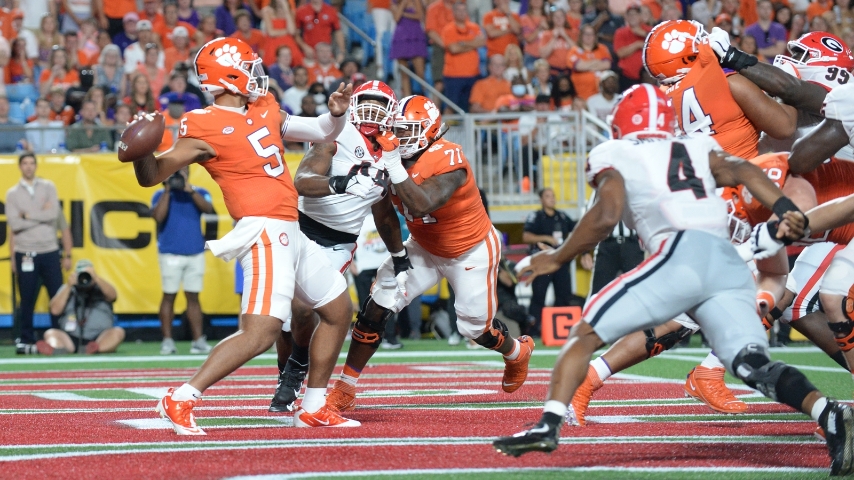
COULD THE SEC HAVE AGREED TOO EARLY?
The SEC has the least restrictive situation in college sports as it stands today. Georgia, which is a charter member of the league, doesn’t even have a formal agreement with the SEC according to the school.
For decades handshakes, tradition and rivalries have been all that’s necessary to stay in the SEC for the Dawgs and the other 13 members. But in the winter of 2021, changes in the SEC’s bylaws were ratified to reflect the growing movement in college sports.
Until very recently members of the SEC could leave by terminating “voluntarily by the resignation of a member.”
That’s no longer the case. Section 3.1.4 of the SEC’s bylaws has been amended, and schools must now provide two years notice before leaving the league. Section 3.2 of the SEC’s bylaws was added of late as well. It includes an “Obligation to Pay Withdrawal Fee” clause that triggers a $30 million payment to the SEC if a league member gives two years notice as is required by the amended Section 3.1.4. Furthermore, a school that has “deemed to have withdrawn” from the SEC owes the league $45 million.
For the first time in years, perhaps ever, there is an exit penalty in the SEC.
All of the adjusting by the league comes just before the SEC starts a rights deal with Disney that has been widely reported as totaling $450 million a year. That number, it should be pointed out, is often shown as a $300 million a year deal, which leads to confusion outside of the league. The $300 million is the money for the league’s tier-one rights - the ones moving from CBS to ABC. Often reporters make no mention of the other $150 million a year that was agreed to in 2008. The $450 million (minimum - as the SEC says it doesn’t confim numbers) a year also does not take into account the addition of Texas and Oklahoma, and more importantly, the SEC Network.
There are three pots of money relating to the SEC and TV. In 2024, those three pots will add up to at least $710 million a year.
SEC Commissioner Greg Sankey, who has been the driving force behind much of the movement in college athletics over the last few years, hammered out what was a massive deal with Disney that incorporated all of the SEC’s TV inventory under one umbrella.
And what an inventory it will be when Oklahoma and Texas join the SEC, which is scheduled to happen in the 2025-26 academic year. At that time, Disney will be able to feature eight of the most-watched programs in college football over the last ten years, and own the rights to Alabama-Georgia, Alabama-Auburn, Alabama-LSU, Alabama-Texas A&M, Georgia-Auburn, Georgia-Florida, Texas-Oklahoma, Alabama-Ole Miss, Georgia-Tennessee and Alabama-Tennessee.
| Top 20 Most-Watched Matchups since 2012 (Total Viewers) |
| 1. Alabama - Georgia - 116,637,000 |
| 2. Ohio State - Michigan - 107,066,000 |
| 3. Alabama - Auburn - 99,999,000 |
| 4. Alabama - Clemson - 99,453,000 |
| 5. Alabama - LSU - 97,890,000 |
| 6. Alabama - Texas A&M - 71,234,000 |
| 7. Ohio State - Michigan State - 70,521,000 |
| 8. Army - Navy - 70,218,000 |
| 9. Ohio State - Penn State - 67,237,000 |
| 10. Georgia - Auburn - 60,008,000 |
| 11. Ohio State - Wisconsin - 59,862,000 |
| 12. Georgia - Florida - 55,996,000 |
| 13. Texas - Oklahoma - 54,378,000 |
| 14. Michigan - Michigan State - 50,508,000 |
| 15. Alabama - Ole Miss - 49,623,000 |
| 16. Notre Dame - USC - 48,038,000 |
| 17. Georgia - Tennessee - 47,470,000 |
| 18. Alabama - Tennessee - 46,407,000 |
| 19. Michigan - Penn State - 44,308,000 |
| 20. Nebraska - Iowa - 43,190,000 |
At that point ten of the most-watched 18 games in college football will all be SEC games controlled by Disney. ABC will have the capability of putting an SEC game on in primetime every Saturday night - something that only happens once a year now on CBS. That doesn’t even consider what could be blockbuster games like Texas-Texas A&M, Texas-Alabama, LSU-Oklahoma, Florida-Oklahoma or Georgia-Texas that will likely happen at least every other year.
SEC insiders suggest their media partner could load up triple headers on ABC starting with Noon kickoffs that roll into afternoon starts. The cap of the day could be a prime-time affair that will likely be the league’s best offering of the week. CBS has dominated afternoon college football for decades. Disney plans to supercharge the SEC with huge matchups on Saturday night that have been promoted all week on ESPN’s various sizeable platforms.
Celebrate Georgia's 2021 NATIONAL TITLE
Check out DAWGSTRUCTION NOW!
Georgia-Florida, Auburn-Alabama - the marquee games of the SEC don’t have be placed in the afternoon anymore. Disney is in prime position to make a killing off the SEC in the future.
The Red River Rivalry duo will get the same amount as everyone else in the SEC. In addition, the SEC is not guaranteed a renegotiation of rights before their contract with Disney expires next decade. However, a move to a proposed nine-game SEC schedule in the future opens up a door for the SEC, and its partner to talk about more revenue for the league. The SEC’s contract with Disney expires in 2034.
In that time the Big Ten will have gone to the market twice with its full rights package - something that will provide a major financial advantage for that league in the years between the next Big Ten contract, which will start in 2030.
What is more clear is the value of the SEC on TV. According to Standard Media Index, a 30-second commercial during the 2019 SEC Championship between LSU and Georgia cost as much as $330,000. That produced $22.3 million in ad revenue for CBS for that one game, according to reporting.
According to Standard Media Index CBS pulled in $151 million in ad sales in 2019. The network reportedly pays $55 million a year for the SEC package - meaning CBS made $100 million before expenses… and that was only for 15 games.
Disney is set to put SEC viewership in overdrive - particularly with ABC’s Saturday Night Football and the addition of the Horns and Sooners. The potential of a nine-game SEC schedule would also add inventory for Disney.
Going to 144 SEC games a year from 112 is 30% growth in an industry where Disney owns nearly 70% of the ad spend in the category is a tremendous opportunity for the Mouse. But growth in the amount of SEC games would likely, but not certainly, mean growth in the rights fees for the league as well. A move to a nine-game football schedule would provide the SEC a very good reason to have a so-called “look-in” during the contract with Disney to renegotiate some of the terms of the deal that was signed at the end of 2020 - again, that’s not specified in the contracts insiders stress.
Celebrate Georgia's 2021 NATIONAL TITLE
Check out DAWGSTRUCTION NOW!
DOES IT ALL ADD UP FOR THE BIG TEN?
The Big Ten is going to cash in big in the coming years. The league’s expansion to include both USC and UCLA will magnify their haul, but the Big Ten’s decision earlier this century to take their full media rights to the market more often than the SEC and others is the reason that league will have a huge payday soon. It was a risk, but that risk has paid off. After years of trailing the SEC - the Big Ten is finally in front, and likley will be the rest of this decade.
SEC insiders acknowledged earlier this summer that the Big Ten would soon have the largest media package in college sports, and there was nothing they could do about it. Still, there has been some mixing up of terms regarding the money the Big Ten and SEC make and give to members.
Conference distributions (SEC - $777.8 million in 2022 | Big Ten $583 million in 2022) to universities includes, but is not limited to media rights deals. Distributions are sent out each year and include any number of pots of income that is collected at the conference level - sponsorships, conference championships, NCAA Men’s Basketball Tournament units, bowl game revenue, College Football Playoff revenue and confidence media rights.
ACC and SEC insiders didn’t doubt that the Big Ten would reach a distribution of near or even over $100 million per school… but emphasized serious skepticism about the Big Ten being able to pull in $100 million per school exclusively from media rights.
“There is 0% chance the Big Ten is getting $100 million per team (in media rights),” said one person with an acute understanding of college media rights deals in July. That turned out to be accurate.
Still, the Big Ten closed this round of “going to the market” (as is used when discussing these matters by insiders) ahead of the rest of college football. The league continues the short-pit strategy it has held of late and will negotiate once more for a new deal in 2030. That means the league can double dip, so to speak, and increase its deal twice before the SEC goes to the market for the contract that concludes in 2034. That will be the first time the SEC has taken its entire package to the market since 2008.
“I think (former SEC Commissioner) Mike Slive might have set it up differently if he knew then what we know now,” said one insider. “But he chose stability and longevity, and it has served the league well over time.”
Suggestions earlier in the year that the Big Ten would nearly triple the SEC’s media rights take were fantastical - and way off as it turns out. In addition, a $100 million per school media deal ($1.6 B) would have come within the universe of what CBS and FOX pay each year for rights to the NFL ($2.1 B and $2.2 B), which comes with a Super Bowl audience of 100 million viewers every few years and much larger audiences than college football on a per-game basis.
The Big Ten had 213 million total viewers last year on broadcast TV (97.1 on FOX; 69.1 on ABC) and cable (11.1 on ESPN; 11.3 on FS1; 24.6M on BTN)
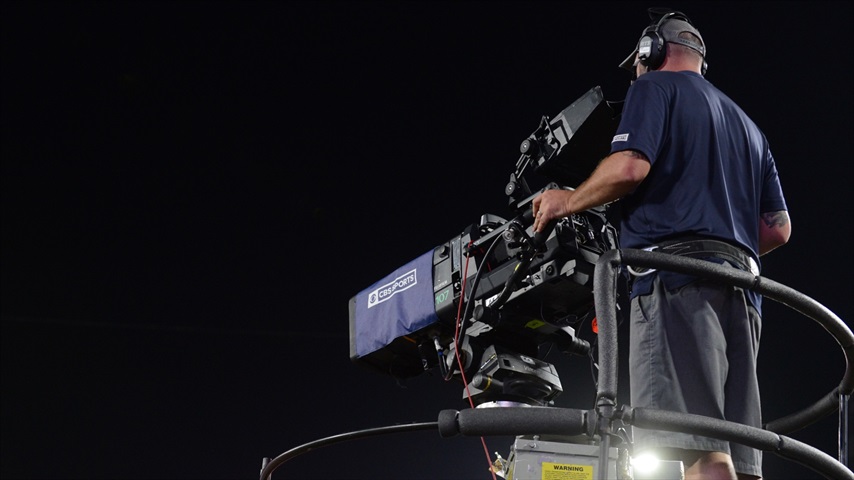
THE RAW NUMBERS
Here is a look at total number of viewers in 2021 for league-controlled games (numbers don’t count league-controlled networks):
| League | Viewers | Games | Viewers/Game |
| Big Ten | 188,804,000 | 51 | 3,702,039 |
| SEC | 161,249,000 | 48 | 3,359,354 |
| Big 12 | 87,637,000 | 46 | 1,905,152 |
| ACC | 68,366,000 | 35 | 1,953,314 |
| Pac 12 | 65,149,000 | 45 | 1,447,755 |
Below is a look at total number of viewers for league-controlled games over the last ten years. What does that mean exactly? This is the fundamental issue in college sports today - who controls TV inventory, and how many people watch it?
In this case any home game, or conference championship game is included in these numbers. For instance, Georgia’s game at Georgia Tech is included in the ACC numbers - not the SEC because that’s an ACC game. Any Alabama game on ABC is not included in Alabama’s number because that’s not a SEC-controlled game. CFP, New Year’s Six and any bowl games are not included in these numbers.
One more caveat about these numbers - the Big Ten Network is the only league-owned channel that is rated. Therefore the BTN’s numbers are included in the numbers below. However, the SECN, Pac 12 Network and ACC Network are not rated, so we don’t know the viewers for any contest on those channels, and therefore they are not included.
TOTAL VIEWERSHIP BY TV PACKAGE 2012-2021
| SEC | 3,302,563,291 |
| Big Ten | 2,887,956,428 |
| Big 12 | 1,642,996,881 |
| ACC | 1,609,767,624 |
| Pac 12 | 1,391,329,000 |
| Notre Dame | 211,100,000 |
*** These numbers are off slightly because of Maryland’s numbers in 2012 and 2013 being attributed to the Big Ten rather than ACC, and Rutgers’ numbers being included in Big Ten numbers rather than the Big East. But those are nominal total views.
The thing that has separated the Big Ten from the other leagues (particularly since that league’s agreement with FOX that started in 2017) is its ability to play games on multiple broadcast networks. The league’s new deal expands that by adding NBC and CBS while losing ABC. All told, the Big Ten played 30 games in 2021 on network television - double the SEC’s 15, and significantly more than any other league.
The Big Ten’s new contract means the league will get paid (or overpaid) significantly more than it is now. It is a big bet by TV networks. Then again, live sports are king on TV. In addition, bringing in USC (No. 18 in total viewers since 2012) and UCLA (No. 31) will push up the total number of viewers for the league.
After all the combination of those two schools means an additional 373,435,000 viewers over ten years. The math works out to something like this for the Big Ten (using 2021 numbers) for all members who will be in the league in the future:
$1,150,000,000 / 201,741,000 (all 2021 B10 games + USC & UCLA games) = $5.70 cost per viewer
That means the network would need to either bring in more than that number in terms of advertising or sponsors per person, or they are losing money.
The SEC?
$514,285,714 / 192,458,000 (all 2021 SEC games + Texas & OU games) = $2.67 cost per viewer
There are two things that very much could be going on at once with these two TV packages. Often insiders will describe the industry that is college football TV as “apples and bananas”. And that’s very true. The SEC’s $514M yearly payday doesn’t include revenue from the SEC Network. All told, the SEC’s 16 members will each get around $44M a year from media rights.
In terms of actual dollars there is no doubt that the Big Ten is getting more from its broadcast media partners - for about the same amount of views as the SEC attracts. In fact, it is possible that that SEC will pass the Big Ten in viewership once all of the SEC’s major games are on broadcast each weekend.
It is also possible that the SEC is being underpaid for its value, and that the Big Ten is being overpaid. It is also probable that both CBS and NBC panicked to make certain not to be cut out of college football packages that continue to grow in popularity. Fear of missing out is a real thing for TV executives.
In 2002, 3,195,000 viewers watched Georgia play Kentucky on CBS. In 2021 that game pulled in 6,369,000 on CBS. That’s more than double, and happened at a time when TV viewership has been plunging for years. Georgia’s most-watched games against the Gators have come over the last four years. Those are anecdotal examples, but examples nonetheless of how college football has grown in popularity - while TV itself is trying to hold on to viewers.
Still, CBS’s decisions over the last two years have been curious. In the decade leading up to the split some insiders felt like the SEC and the network would continue to move forward together.
“I can’t see them giving up the SEC,” said one person with an understanding of the situation in the early part of last decade.
But that changed, and the relationship between the league’s members and CBS seemed to sour. CBS did not renegotiate the contract it held with the SEC after the league expanded to 14 teams in 2012, and over time the conference formed a stronger bond with Disney. The SEC Network probably had a big part in that.
Still, it was hard to picture the SEC leaving what it had built with CBS since 1996. Did CBS make the SEC the best conference, or did the SEC’s teams and passionate fanbases fuel a ratings juggernaut? We don’t know. But when CBS’s bid for the SEC came in too low that relationship was severed.
“We made a strong and responsible bid. While we've had success with the SEC on CBS, we are instead choosing to aggressively focus on other important strategic priorities moving forward,” CBS said in a statement about their failed bid for SEC games in late 2019.
All of the sudden CBS was without a dance partner on future Saturdays. Fast forward a few years later, and the network got in bed with the Big Ten. Still, CBS went from paying $55M a year for the best SEC game of the week... to passing on that package at $300M... to paying $350M for the Big Ten’s second-best game of the week.
That’s the equivalent of saying: “We will pass on the Iron Bowl, and be glad to pay six times the amount we were paying for Bama-Auburn to broadcast Wisconsin-Minnesota to half of the audience we had.”
Misstep by CBS or not, the Big Ten took full advantage of in August - to the tune of $350,000,000 a year.
